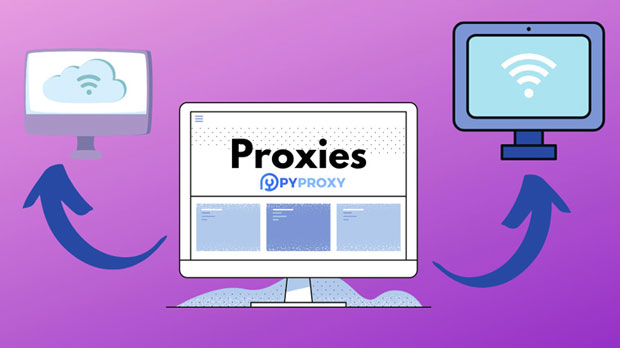When it comes to selecting proxy services, two prominent players in the market are 911 Proxy and PYPROXY. Both offer a range of proxy solutions designed to cater to different user needs, yet their user experience (UX) can vary significantly. For individuals or businesses looking to integrate proxy solutions into their daily operations, the ease of use becomes a crucial factor in making an informed decision. This article will compare the user experience of 911 Proxy and Pyproxy, analyzing key factors such as interface design, setup complexity, accessibility, and overall usability. We will explore which of the two services is easier for users to get started with and which one offers a more intuitive and seamless experience. Overview of 911 Proxy and PyproxyBefore delving into the specifics of user experience, it's important to first understand what 911 Proxy and Pyproxy are. Both are proxy services that provide users with access to a network of IP addresses, enabling them to mask their real location or bypass restrictions imposed by websites or regions. 911 Proxy is widely known for its extensive proxy network, designed primarily for users who require high-speed and anonymous browsing. It is a service that emphasizes flexibility and a broad range of features, catering to both casual users and professionals.On the other hand, Pyproxy is more tailored to individuals who need a simple, straightforward proxy solution with easy integration into applications and software. Its focus is on offering high usability and functionality with minimal setup, ideal for users with limited technical expertise.User Interface and DesignThe user interface (UI) plays a significant role in determining how easy it is for a user to navigate a service and perform desired tasks. 911 Proxy offers a complex yet feature-rich UI. While it provides users with a variety of options and settings for managing proxies, its design can be overwhelming, especially for beginners. The dashboard is functional, but it requires a bit of time to familiarize oneself with its layout. New users might struggle to find the specific settings or options they need, and the multitude of features could lead to confusion at first.In contrast, Pyproxy’s UI is designed with simplicity in mind. The interface is minimalistic, with only the necessary options presented clearly on the screen. This makes it much easier for users to get started without feeling overwhelmed. Setting up proxies or accessing features is streamlined, making it an ideal choice for users who are new to proxy services or those who value ease of use over advanced customization options.Ease of Setup and ConfigurationFor any proxy service, one of the most critical aspects is how easy it is to set up and configure. Setting up proxies should be a seamless process that allows users to get online quickly.911 Proxy has a more complicated setup process due to its advanced features and customization options. While experienced users may appreciate this flexibility, beginners might find it difficult to set up and configure the service. The installation requires following detailed instructions, and users may need to adjust multiple settings to optimize their experience. Additionally, while the service does offer technical support, it can still be time-consuming for non-technical users to get everything set up properly.Pyproxy, in contrast, offers a much more straightforward setup. Users can quickly download and install the software with minimal intervention, and the service guides them through the initial steps. The setup process does not require extensive configuration, making it ideal for individuals who need a quick, hassle-free solution. For those who prefer not to deal with the technical aspects of proxy configuration, Pyproxy provides a user-friendly alternative.Accessibility and IntegrationAnother important factor in determining which proxy service is easier to use is how accessible and easy it is to integrate the service into various systems or applications.911 Proxy offers a range of options for integration, but the process can be a bit more involved. Users need to configure proxies manually or set up automated scripts to ensure compatibility with different platforms and software. While this level of customization can be a significant advantage for experienced users who need tailored solutions, it could prove challenging for beginners who are not familiar with the integration process.Pyproxy, on the other hand, excels in its ease of integration. The service is designed with developers and general users in mind, offering straightforward methods to integrate proxies into different applications. Whether it’s for personal use or business-related tasks, Pyproxy’s integration process is simple, requiring little technical knowledge. This makes it a great option for users who need to set up proxies quickly without investing time in complicated configurations.Support and DocumentationA key aspect of the user experience is the level of support provided by the service. Having access to comprehensive documentation and responsive customer support can make a significant difference when troubleshooting or encountering issues.911 Proxy offers robust documentation and support, but the sheer volume of information may be overwhelming for new users. While their support team is knowledgeable and available, the complex nature of the service means that users may require more time to resolve issues or get assistance.Pyproxy takes a different approach with its support system, offering more concise and easy-to-understand documentation. The user-friendly resources make it easier for new users to find solutions to common problems. Additionally, Pyproxy’s customer support is quick to respond, which is a plus for those who need assistance without waiting for long periods.Speed and ReliabilityProxy services must offer fast and reliable connections, especially when they are used for business or security purposes. Both 911 Proxy and Pyproxy are known for their speed and reliability, but there are some differences in how they deliver these features.911 Proxy boasts a large and diverse network of proxies, which provides users with the ability to select from a variety of locations. This flexibility allows users to find faster routes or more reliable connections based on their needs. However, the speed can vary depending on the specific proxy server being used, and some users have reported occasional slowdowns or disruptions.Pyproxy, being a simpler and more streamlined service, typically offers consistent performance with fewer variations in speed. The service is optimized to deliver a steady connection, which is ideal for users who need reliable and fast proxies but don’t require the extensive network offered by 911 Proxy.Conclusion: Which Service is Easier to Use?After comparing 911 Proxy and Pyproxy across various aspects of user experience, it is clear that Pyproxy is the more user-friendly option. Its simplified interface, easy setup, and seamless integration make it an ideal choice for individuals who prioritize ease of use over advanced customization. On the other hand, 911 Proxy caters more to experienced users who need a high level of control and flexibility, but it may be challenging for beginners.In summary, if you are new to proxy services or prefer a straightforward, hassle-free experience, Pyproxy would be the better choice. For users with more advanced needs and a willingness to invest time in learning the system, 911 Proxy offers a more customizable and robust solution. Ultimately, the decision comes down to the specific needs of the user and the level of expertise they possess.
Mar 20, 2025
![arrow]()




























































